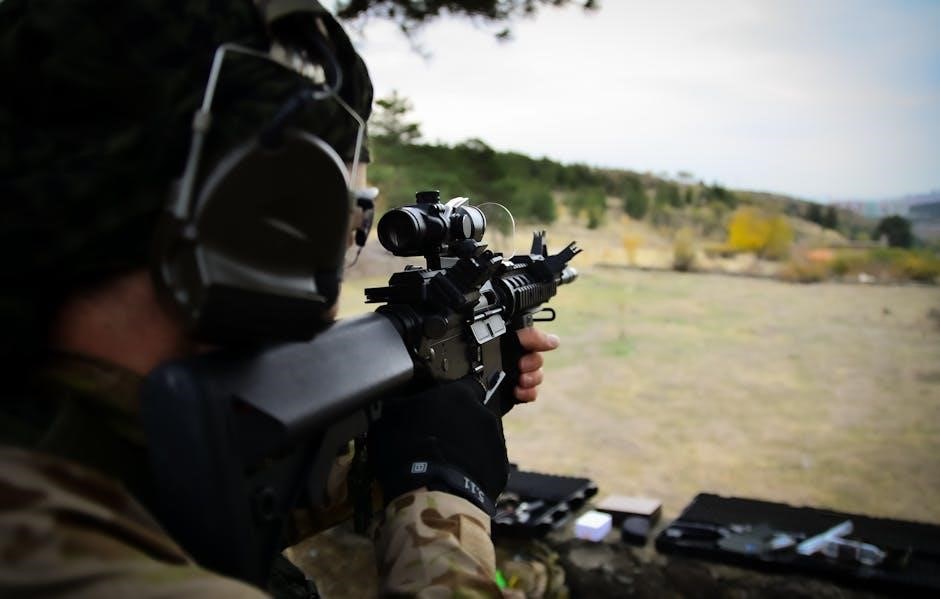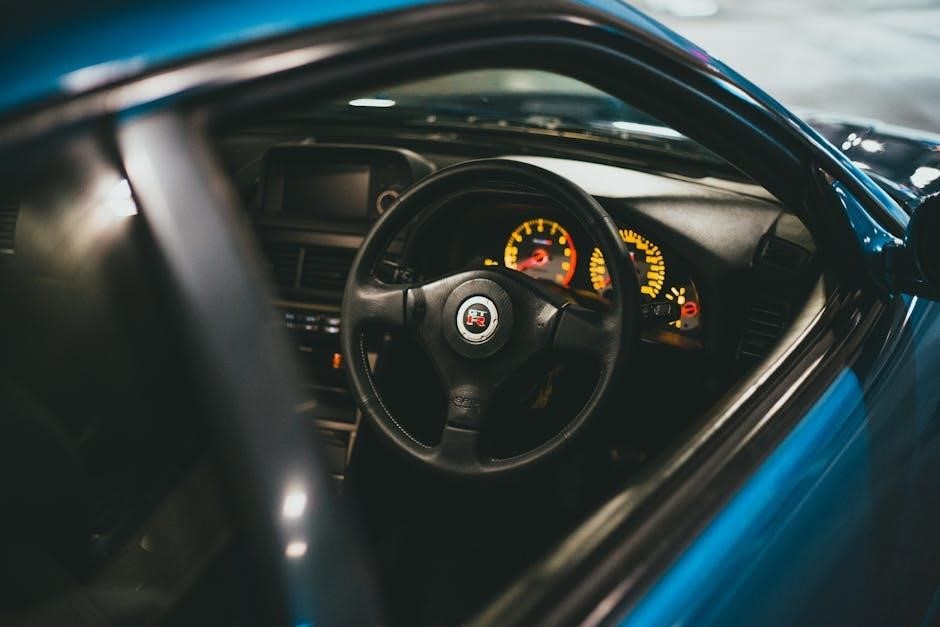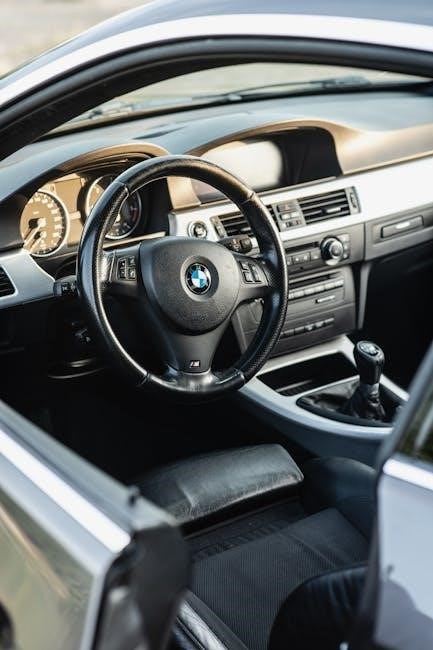Converting a manual transmission to an automatic involves complex mechanical and electronic adjustments‚ requiring specialized expertise to ensure compatibility and optimal performance‚ while addressing potential challenges and costs effectively.
Why Convert from Manual to Automatic Transmission?
Converting a manual transmission to an automatic offers enhanced convenience and ease of driving‚ particularly in heavy traffic or hilly terrain. Automatic transmissions eliminate the need for constant clutch operation‚ reducing driver fatigue and making the driving experience smoother. This conversion is ideal for urban commuting‚ where frequent stopping and starting are common. Additionally‚ automatic transmissions are often preferred for their ease of use‚ especially for drivers who find manual shifting challenging or time-consuming. The shift toward modern driving habits and the demand for comfort have made automatic transmissions increasingly popular. For those seeking a more relaxed and hassle-free driving experience‚ converting to an automatic transmission can be a worthwhile investment.

Key Considerations Before Conversion
Converting a manual to an automatic transmission involves assessing costs‚ compatibility‚ and feasibility. Professional expertise is essential to ensure the process is executed smoothly and effectively‚ avoiding potential issues.
Cost Implications of the Conversion
The cost of converting a manual to an automatic transmission can vary significantly‚ ranging from $250 to $2‚500 or more‚ depending on the vehicle and complexity. Basic swaps may be more affordable‚ while modern cars often require extensive modifications‚ including ECU reprogramming and additional components. High-performance or custom conversions can escalate costs further. Labor fees from professional mechanics also contribute substantially‚ as the process is technically demanding. Potential risks‚ such as incompatible parts or system malfunctions‚ may lead to additional expenses. It’s crucial to assess the total investment carefully‚ ensuring it aligns with the vehicle’s value and intended use. While the convenience of an automatic transmission is appealing‚ the financial commitment must be weighed against the benefits.
Compatibility of the Vehicle with Automatic Transmission
Not all vehicles are inherently compatible with an automatic transmission‚ making compatibility a critical factor in the conversion process. The engine type‚ drivetrain‚ and existing mechanical setup must align with the specifications of the automatic transmission. Older vehicles or those with simpler engines may be more straightforward to convert‚ while modern cars with advanced electronics often pose greater challenges. Additionally‚ rear-wheel-drive vehicles typically offer easier conversion possibilities compared to front-wheel-drive models due to drivetrain design differences. It’s essential to verify whether the target automatic transmission was originally available for the vehicle‚ as this ensures compatibility and simplifies the process. In some cases‚ modifications to the engine ECU‚ wiring‚ and mounting points may be required to achieve proper integration. Always consult a professional to assess the vehicle’s suitability for conversion.
The Role of a Professional Mechanic in the Process
Converting a manual transmission to an automatic is a highly complex process that demands the expertise of a professional mechanic. They play a crucial role in assessing the vehicle’s compatibility‚ selecting the appropriate automatic transmission‚ and ensuring proper installation. A skilled mechanic will handle the intricate tasks of reprogramming the engine ECU‚ modifying the wiring harness‚ and integrating the necessary electronic systems. They also address potential issues such as cooling system upgrades and drivetrain modifications. Without professional guidance‚ the conversion risks leading to poor performance‚ mechanical failures‚ or even safety hazards. Their experience ensures the process is executed smoothly‚ minimizing risks and guaranteeing optimal results. DIY attempts are discouraged due to the technical challenges involved‚ making a professional’s expertise indispensable for a successful conversion.

Technical Requirements for the Conversion
Replacing the manual gearbox with an automatic transmission requires reprogramming the engine ECU‚ modifying the wiring harness‚ and upgrading the cooling system to ensure compatibility and performance.
Replacing the Manual Gearbox with an Automatic Transmission
Replacing the manual gearbox with an automatic transmission is a critical step in the conversion process. This involves removing the existing manual transmission and installing a compatible automatic unit. The process requires precise alignment and connection of the new transmission to the engine and drivetrain. Compatibility is key‚ as not all automatic transmissions will fit or function properly with every engine. In some cases‚ adapters or custom mounts may be necessary to ensure a proper fit. Additionally‚ the clutch pedal and manual shifter must be removed or replaced with components suitable for automatic operation. This step often requires specialized tools and expertise to avoid damage to the engine or transmission. Proper installation ensures smooth gear shifts and optimal performance‚ making it a foundational aspect of a successful conversion.
Reprogramming the Engine ECU for Automatic Transmission
Reprogramming the engine ECU is essential when converting from a manual to an automatic transmission. The ECU must be updated to recognize and communicate with the new automatic transmission‚ ensuring proper gear shifting and torque delivery. Without reprogramming‚ the engine may not function correctly‚ leading to poor performance or even damage. Modern vehicles rely heavily on electronic controls‚ so the ECU must be recalibrated to account for the automatic transmission’s unique characteristics‚ such as torque converter engagement and solenoid operation. This process typically requires specialized software and tools‚ making it a task best handled by a qualified technician. Proper ECU reprogramming ensures seamless integration between the engine and transmission‚ optimizing drivability and efficiency. It is a critical step that cannot be overlooked in the conversion process.
Modifications to the Wiring Harness and Electronics
Modifying the wiring harness and electronics is a critical step in converting a manual transmission to an automatic. The electrical system must be updated to accommodate the automatic transmission’s solenoids‚ actuators‚ and sensors. This involves rewiring the vehicle to integrate the new transmission’s control modules and ensure proper communication with the engine. Additional sensors‚ such as gear position and torque converters‚ may need to be installed to provide real-time data to the ECU. The wiring harness must be upgraded to handle the increased load of electronic signals‚ and compatibility issues between the manual and automatic systems must be resolved. These modifications require precise technical expertise to avoid electrical faults and ensure smooth operation. Properly adapted electronics are essential for the automatic transmission to function correctly and maintain optimal vehicle performance.
Upgrading the Cooling System for Automatic Transmission
Upgrading the cooling system is essential when converting from a manual to an automatic transmission; Automatic transmissions generate more heat due to the torque converter and additional internal components‚ which can strain the existing cooling system. A heavier-duty radiator or an additional transmission cooler may be required to maintain optimal operating temperatures. The cooling lines and hoses must also be modified to accommodate the automatic transmission’s specifications. Ensuring proper coolant flow and compatibility with the new transmission is critical to prevent overheating and potential damage. This upgrade not only protects the transmission but also safeguards the engine and other vital components from heat-related stress. A well-designed cooling system ensures the vehicle operates efficiently and reliably after the conversion.

Pros and Cons of Manual to Automatic Conversion
Converting to an automatic transmission offers enhanced convenience and smoother driving but may reduce fuel efficiency and increase costs. Weighing these factors helps determine if the conversion aligns with your needs.
Advantages of Converting to an Automatic Transmission
Converting to an automatic transmission offers several benefits‚ including smoother acceleration and reduced driver fatigue‚ especially in heavy traffic or hilly terrain. Automatics eliminate the need for manual clutch operation‚ making driving more convenient and accessible for inexperienced drivers. Additionally‚ modern automatic transmissions often provide better fuel efficiency and quieter operation compared to older models. The conversion also enhances the vehicle’s resale value‚ as automatic transmissions are generally preferred by a larger audience. Furthermore‚ automatic transmissions reduce the wear and tear on the clutch and gearbox‚ potentially lowering long-term maintenance costs. For vehicles used in urban or stop-and-go environments‚ the shift to automatic can significantly improve overall driving comfort and performance.
Disadvantages of Converting to an Automatic Transmission
Converting a manual transmission to an automatic can be costly and complex‚ often requiring significant mechanical and electronic adjustments. The process may introduce compatibility issues with the vehicle’s existing systems‚ potentially leading to performance problems. Additionally‚ the conversion can result in a loss of driver engagement and control‚ which many enthusiasts value in manual transmissions. The added weight and complexity of automatic transmissions can also affect fuel efficiency and handling. Furthermore‚ the conversion process may void warranties or cause immobilizer issues‚ depending on the vehicle’s make and model. Lastly‚ the high cost of parts and labor‚ combined with the risk of unforeseen complications‚ may make the conversion less practical for some vehicle owners.

Cost Estimation and Practicality
Converting a manual to an automatic transmission can cost between $250 and $2‚500‚ depending on the vehicle and transmission type‚ making it a significant financial decision requiring careful consideration of practicality and long-term benefits.
Estimated Costs of the Conversion Process
The cost of converting a manual transmission to an automatic can vary widely‚ ranging from $250 to $2‚500 or more‚ depending on the vehicle‚ transmission type‚ and complexity of the process. For basic conversions using readily available parts‚ expenses may stay on the lower end. However‚ modern vehicles often require additional modifications‚ such as reprogramming the ECU or upgrading the wiring harness‚ which can significantly increase costs. Labor fees from a professional mechanic or transmission specialist also play a major role‚ with rates varying by location and expertise. In some cases‚ custom fabrication or rare parts may drive the total cost higher. It’s essential to obtain a detailed estimate from a qualified technician to understand the full financial commitment involved in the conversion process.
Is the Conversion Worth the Investment?
Whether converting a manual transmission to an automatic is worth the investment depends on several factors‚ including the vehicle’s intended use‚ the driver’s preferences‚ and the overall cost. For some‚ the convenience and ease of driving an automatic in heavy traffic or urban environments justify the expense. However‚ the process is often costly‚ with prices ranging from $250 to $2‚500 or more‚ depending on the complexity and vehicle type. Additionally‚ modern cars may require electronic modifications‚ further increasing the cost. For many‚ purchasing a car that already has an automatic transmission may be more economical than converting a manual one. Ultimately‚ the decision should be based on balancing the benefits of an automatic transmission against the financial and practical challenges of the conversion process.
